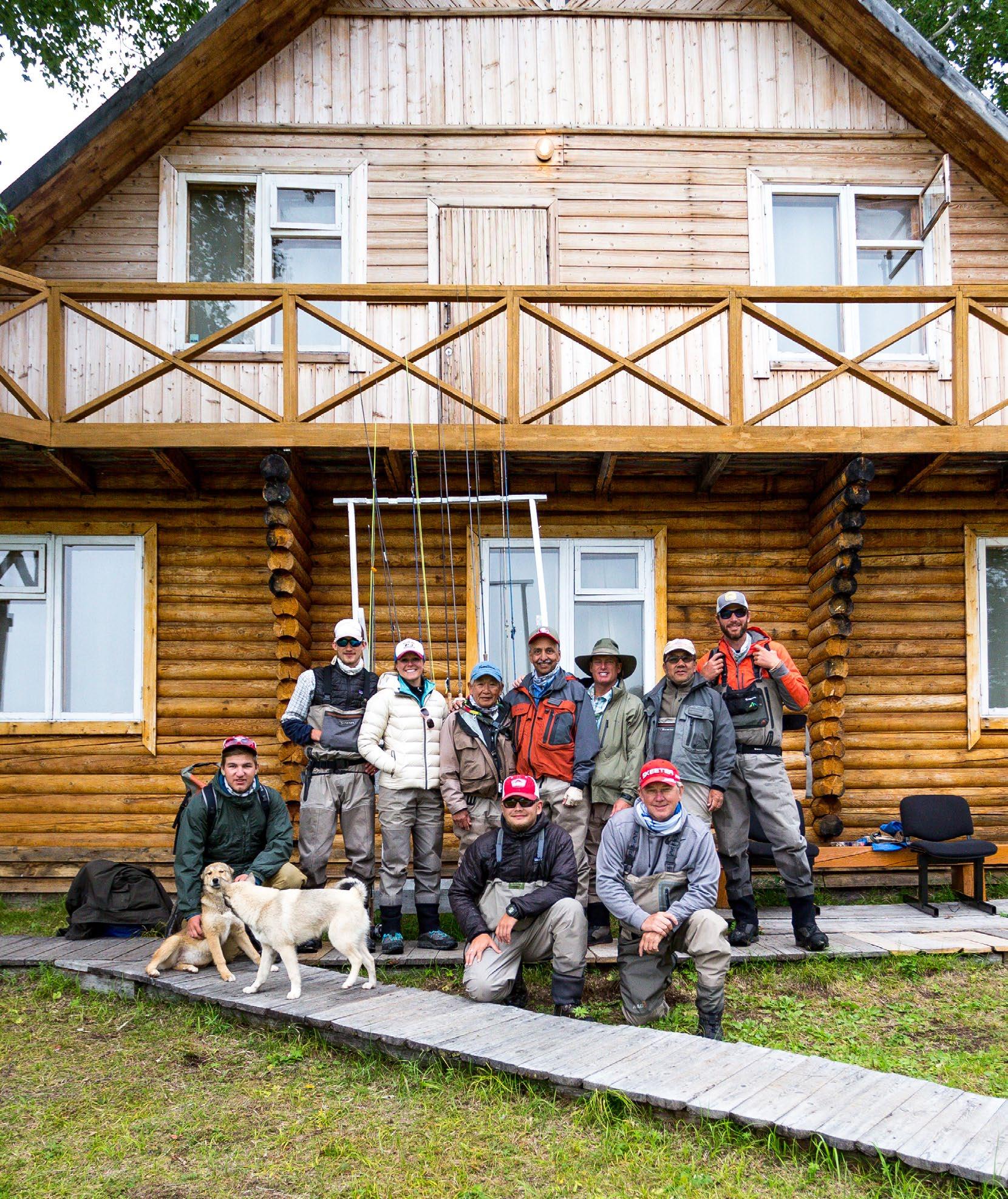
10 minute read
Kamchatka: The Upper Zhuponova
Someone once told me that rivers are the roads of the forests - supplying travel ways for various fish, mammals, birds, amphibians, insects and people to access and consume what they needed. This generous resource isn’t only a vital part of Earth’s ecosystem but also an integral means for the hopeful fisherman to pursue and encounter a timid opportunist.
By CAMILLE EGDORFF
Unfortunately, in today’s world, it’s difficult to find a river free of any human influence - a sobering and somber reality of the 21st century. While many may believe the exploration of new lands can only be found in the journals of explorers long past, there is one place that still harbors a sense of the unknown and adventure. Especially for the avid angler. A place with 30 inch rainbow trout eating rodents, carries stories about Super Kundzha, and boasts Russian helicopters and vodka infused Russian fishing guides. These things sparked my curiosity and over the course of several years, the peninsula whom many call, Kamchatka, loomed deep in my thoughts.

The smell of diesel wafted through the air as I walked towards a Mi-8 helicopter surrounded by stern faced Russians wearing oil stained overalls. The area was abuzz with anglers taking photos, excited chatter and workers piling gear into the belly of the aircraft. The helicopter itself looked ancient with black exhaust stains blanketing its top half and rickety blades that drooped down like partially cooked noodles. We arrived in Petropavlovsk this morning after a 4 hour flight from Anchorage. I’m here on a two week visitation for Yellow Dog Flyfishing Adventures where I’ll visit two programs on an esteemed river named the Zhupanova. The first being Zendzur Lodge and the second being the upper Zhupanova Float trip.
As we left Petropavlovsk, the vast expanse of lush vegetation is sensational. A thick blanket of forest stretches beyond the horizon and only ends at the base of tall volcanoes or the banks of a river. The most amazing part, there isn’t a sliver of human influence to be seen. Kamchatka has a population just over 340,000 and being slightly larger than state of California, that’s equivalent to 6 miles of land per individual. To say its remote is an understatement. 30 minutes later we were hovering over the lodge, slowly inching closer to the launch pad sitting atop an overlook to the river. Zendzur which accommodates 6 anglers per week and accesses the river by jet boats, has several established buildings including a dining hall, guest cabins and a few sheds in the back for maintenance.


Our guides consisted of two Russians, Nazar and Aleksey, and head guide Greg Kennedy who hailed from Redding, California.
The Zhupanova is an impressive river and is the epitome of what a healthy fishery should be. While it’s a grand spectacle surrounded by tall forest laden hills and snow-capped volcanoes, it can be a daunting and intimidating river upon first sight. Decent wading areas are minimal with most of the river being dotted by boulders that create large waves - making certain sections look like raging torrents. But aside from its harsh exterior there is one thing to remember – big water often means big fish and the Zhupanova is no exception to that rule.
This river harbors a strain of rainbow that’s not only the largest in Kamchatka but very close to being the largest in the world. The average fish can range between 26 – 28 inches with a giant being 30 – 35 inches in length. However, unlike many rivers on the peninsula, this river requires effort, time and persistence and will not produce exuberant numbers each day.
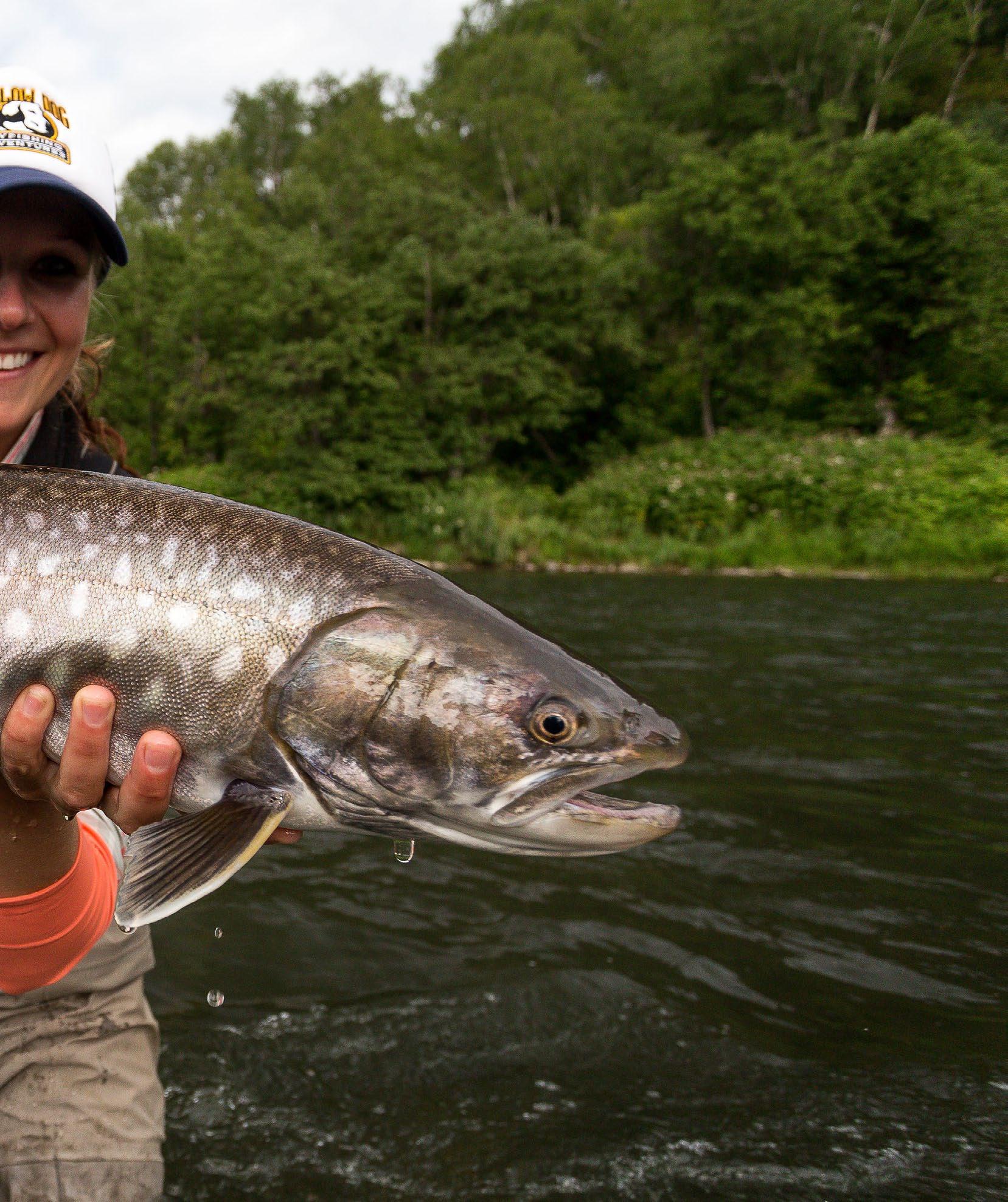
Instead a realistic expectation is 2 – 5 fish in a day with the possibility of not catch anything. This is a place that will not only test an angler’s skills but their athleticism and tenacity as well. Throughout the week, we accessed different sections of river by way of jet boat and alternated between up and down river each day. Our arsenal of gear was slightly different than the normal trout fair most of us were accustomed to back in the states.
Rather than using a light 5 or 6wt to delicately present dries to rising trout, we used 7 and 8wt rods with heavy sink tips, heavy flies like the Dali Lama and Morrish Medusa and 20lb Hatch tippet. Had we used anything lighter, we would have been stripped of our dignity and left in shock at the power of these fish. Structure was a vital component to being successful and where ever there were large boulders, we knew there was at least one hungry trout lurking in a slipstream.

The effective approach was to cast at a 45 degree angle downstream, make a large mend then feed line allowing the fly to reach the lower water column. The next step was to let the current do the work and let it swing to the bank. An avid steelhead fishermen would be right at home since the tactics used are very similar.
We caught several respectable fish throughout the week and on the last day I caught what I refer to as my unicorn – a 32 inch brute of rainbow which is to this day, the largest I’ve caught. The strength and determination these fish exploit is unlike anything I’ve encountered before and have left a lasting impression.

There are few places left where rainbows of this caliber free of any hook scars, blemishes or evidence of any handling. These fish are perfect and are direct reflection of the fishery’s health. With copious numbers of pacific salmon that re-enter this river system every year and the bountiful amount of baitfish and sculpins, there is an endless supply of food year- round. Making this the perfect habitat to grow uncommonly large fish.
At the end of the first week, it was time to head farther inland to begin the upper Zhupanova float trip.

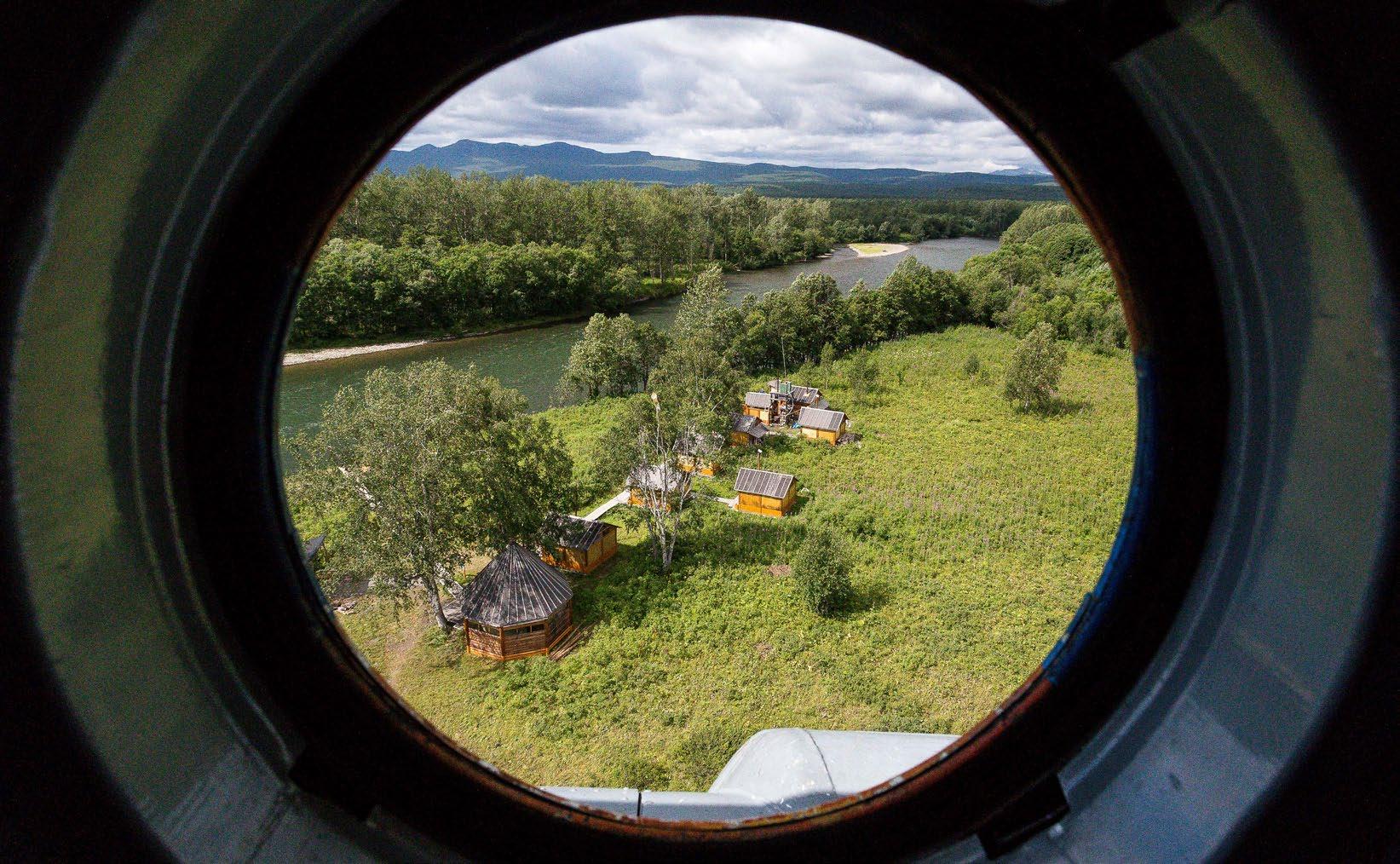
After the fog lifted and the weather improved, the Mi-8 helicopter returned and we began the short 20 minute flight to our first campsite which is roughly 100 river miles from the pacific. Each campsite has established cabins with a boarded walkway, a dining room, shower, and flushing toilet. Certainly the most glamorous camping I’ve done. Like Zendzur, the float trip accommodates a total of 6 anglers per week which makes it easy to get acquainted with everyone including your guides. For this week our guides consisted of two Russians, Dima and Sasha, and one South African, Christiaan Pretorius and our cook, Pasha.
The upper Zhupanova is very different from its counterpart about 60 miles downstream. Here the river flows gentle and quiet – so quiet, you can hear critters crossing the river at night as you lay in bed. Each camp is stationed directly on the river bank, allowing anyone the opportunity to indulge in a late night fishing session or enjoy a cocktail while watching the river effortlessly flow by. Throughout the float, there are a total of 6 camps and each one has its own camp manager who maintains and prepares for the next group of anglers. The only time they have human interaction for an entire week is when a new group of anglers arrives to stay just one night - and the season is over 8 weeks long.
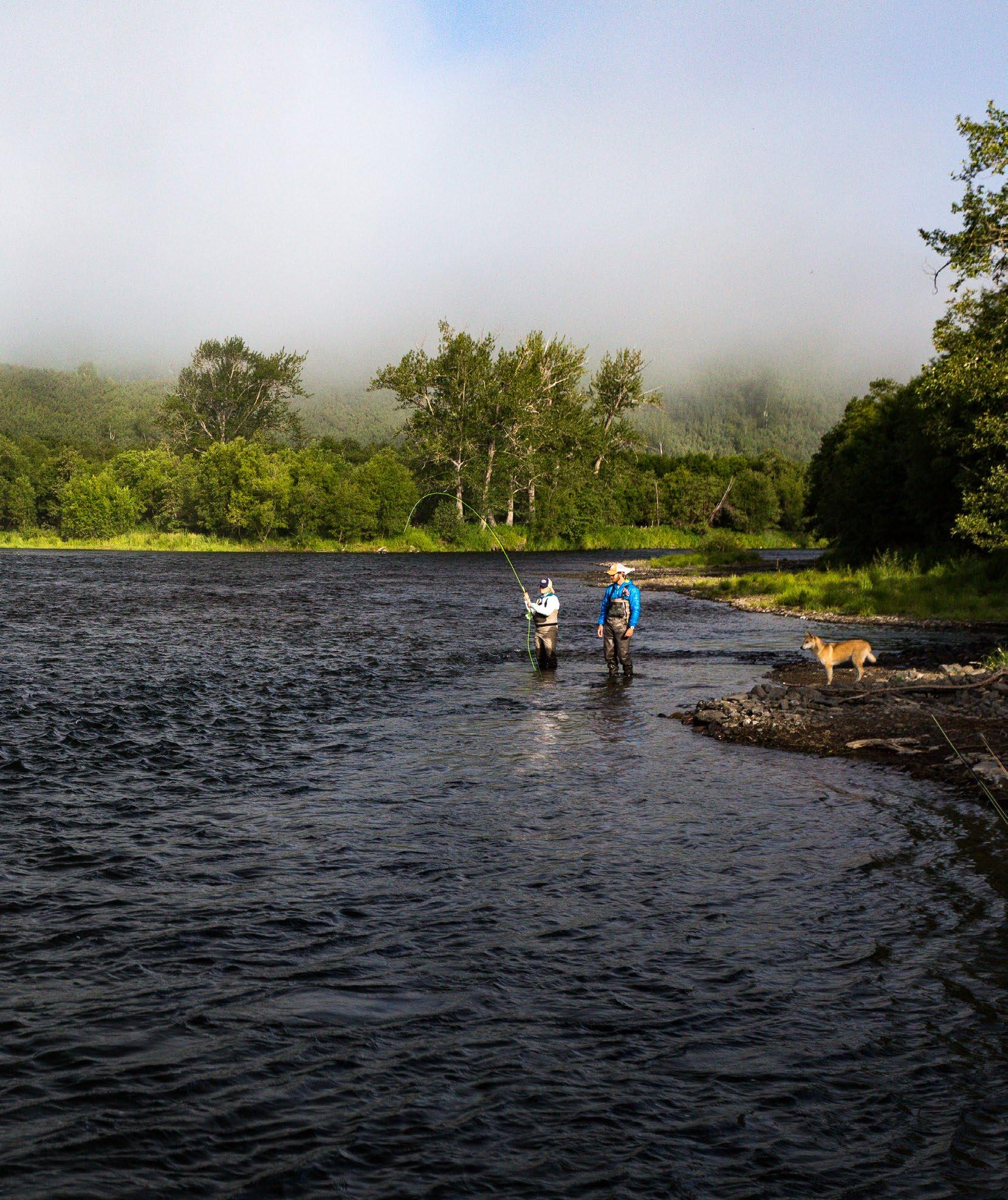
The fishery is also very different and instead of scraping up only 2-3 fish a day, the numbers jump up to 5 – 10. Like the lower river, Dolly Varden and Super Kundzha are also present here and can add a unique diversity that isn’t found in many other areas of the world. The Super Zundzha, or White Spotted Char, are members of the Char family and are only found in the Far East such as Japan, Korea, and Russia. While some populations are known to be river residents just like river dwelling rainbow trout, there are populations known to travel back and forth between salt and freshwater. The Zhupanova is one of only a few rivers in Kamchatka to have searun Kundzha that can reach sizes between 20 and 40 inches. T
hey are an impressive fish that’s very willing to take a fly if given the opportunity, they fight incredibly hard and are a rare species to target.


Each day we loaded our gear into a raft and worked our way down to the next camp covering roughly 8-12 miles a day. Approaching this fishery is very similar to fishing the lower river, however keeping the fly active was much more crucial.
Constant action and movement seemed to be the key and once we got the hang of things, fish were being hooked left and right. I spent a large amount of time fishing mouse patterns as I’ve always been infatuated with skipping a mouselike fly across the surface.

I’m sure any dry fly fisherman can agree there is nothing more thrilling than watching a fish take on the surface. Especially when the dry is the size of a small rodent. I had an experience that will unravel the most composed of individuals and one that I will never forget. We had stopped to wade the outside bend of the river which was littered with rocks and structure.
I was fishing a mouse and as a result had first go at fishing through the run. After fishing each rock with no luck I turned my attention to the bank where there was a small patch of weeds in a shallow eddy. Thinking the possibilities of a fish being there were slim, I carelessly made a perfect cast which landed the fly right at the center of the pool.
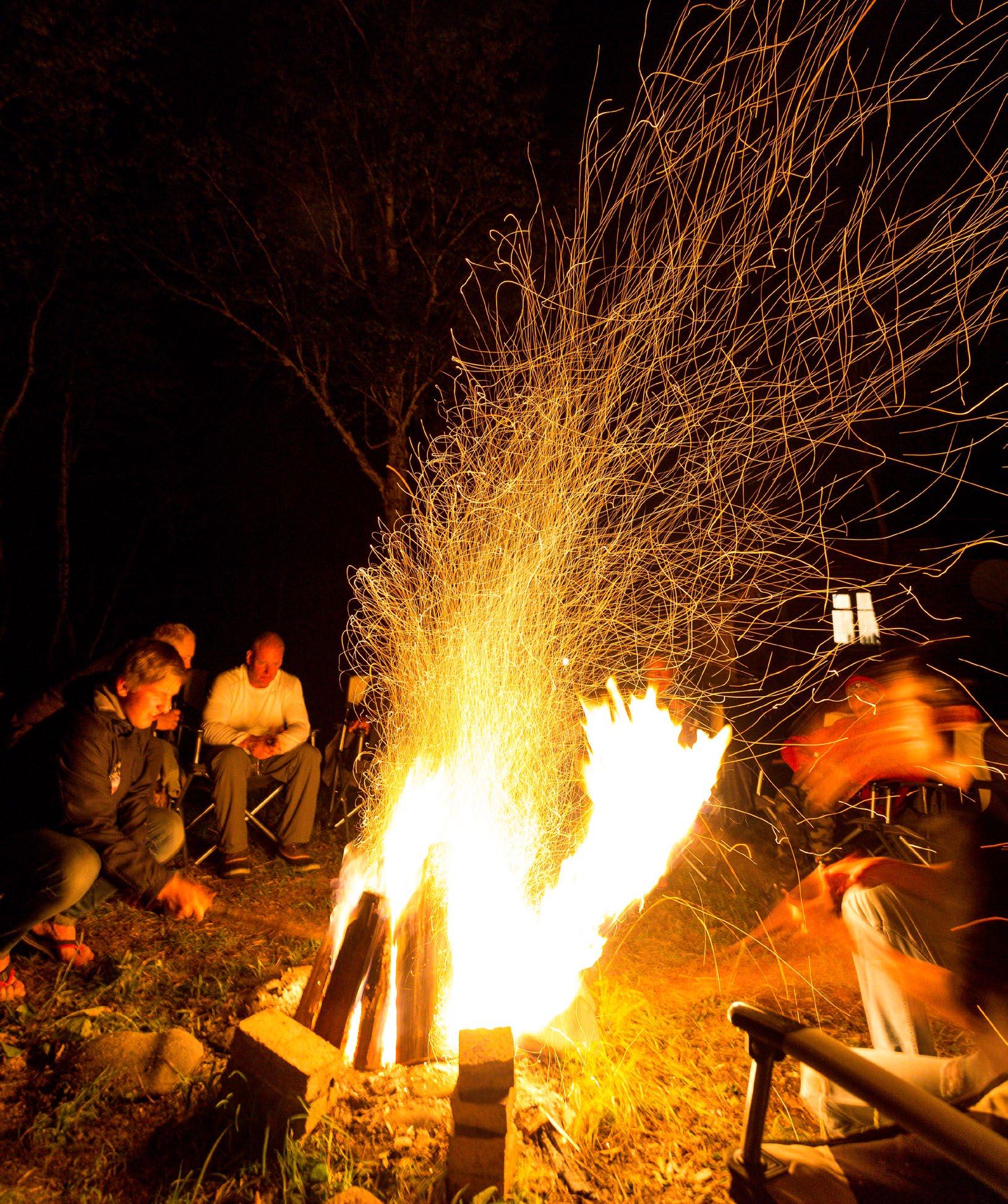

I stripped the mouse twice then saw a snout as the mouse disappeared into a black hole. It was the laziest eat I had ever seen. I set the hook and within seconds, the fish was upstream and across the river from me – a feat that made me think twice about how big this thing could be. Several minutes later, Christiaan, scooped this fish in the net and what proceeded next was what any fisherman would do after landing a 30 inch rainbow on a mouse - a celebration of curse words, high fives, hugs and tears. I’ll never forget that day.
A few days later we found ourselves at our last campsite and after an incredible experience, we were all in the mood for celebration. Luckily, the camp manager had built a dance floor and decorated the camp with Christmas lights and a disco ball.
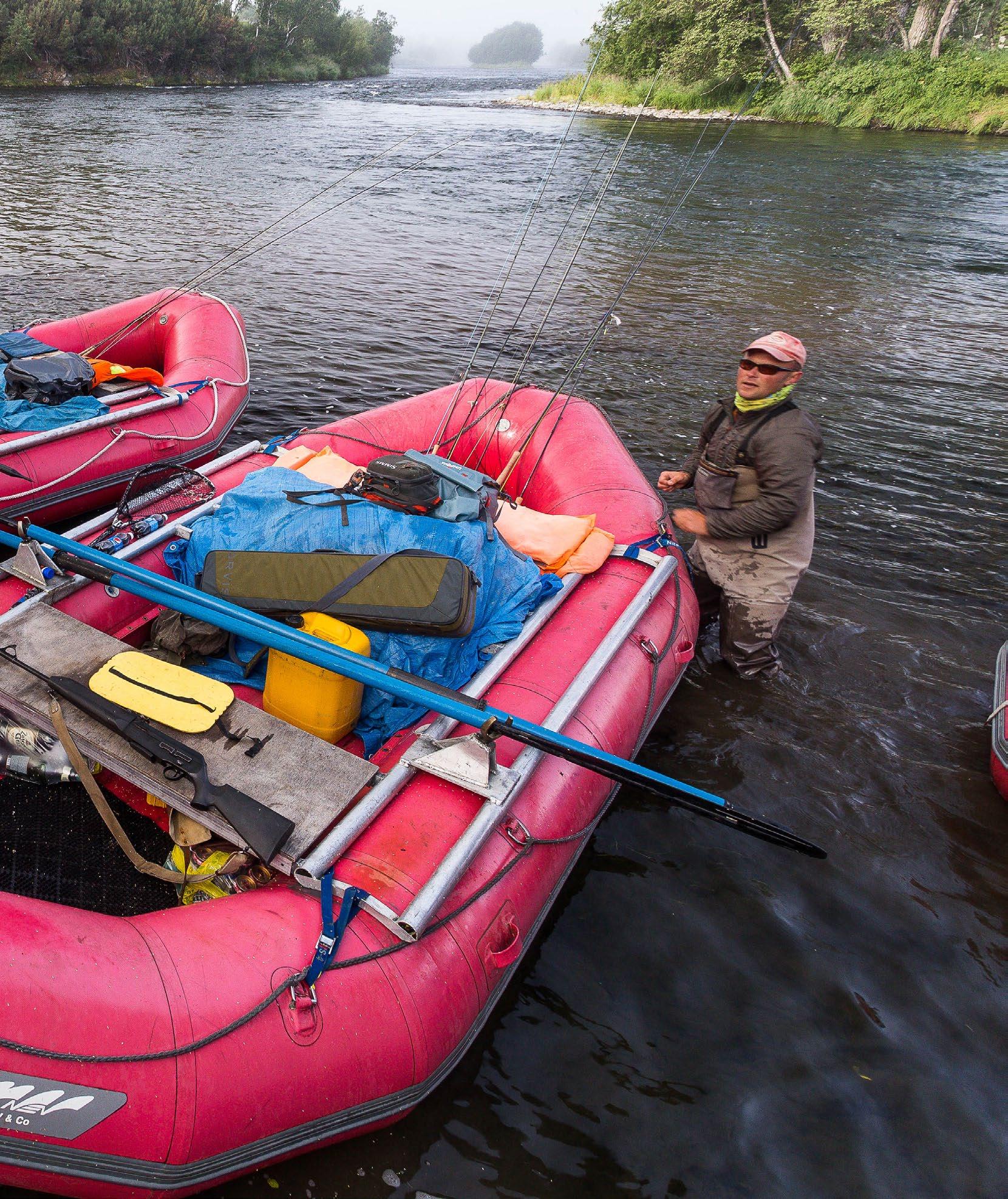
To complete the occasion he had a huge speaker to which he played Lady Gaga and a number of other interesting musicians. We danced, drank vodka and reminisced on an incredible adventure in the backwoods of Kamchatka. A perfect and seemingly appropriate ending to a memorable and life altering trip.
Kamchatka is like taking a step back in time where the rivers remain the major travel ways and lifeblood for the ecosystem. Very few major highways, skyscrapers, big airports, dams or major developments have taken foothold here and for the avid explorer, this place has year’s worth of exploration. And for the adventurous fisherman, they could be here for a lifetime.
